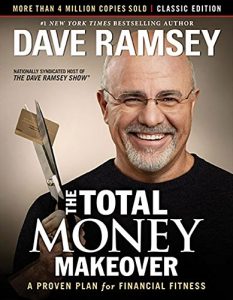(9 Ways) How To Make $100k A Year In Passive Income
I recently spoke with a new Passive Investor Circle member (48-year-old endodontist) to help create a game plan for his financial future.
One of the first questions I ask new members is, “What are you trying to accomplish?”
Most people don’t have an answer because they haven’t sat down long enough to think about any financial goals. Yet they go to work each morning to make money but don’t know how to invest it to reach “work optional” status.
I loved his answer: “I’m not sure what I want, but I understand one thing. If I don’t make money, I don’t make money. And that’s not how I want to continue to operate.”
He realized that if he wasn’t trading his time for money (treating patients), then zero cash flow was being earned. Unfortunately, this is how most of us operate.
Why? because it’s the only thing we’re taught (and everybody else is doing it).
Enter passive income.
Passive income is sometimes called “mailbox money” and doesn’t physically require you to be there in order for it to hit your bank account. But it’s not as simple as it sounds, because if it were, everybody would have it.
In this article, we’re going to discuss:
- What is passive income
- Different types of passive income
- Benefits of having passive income
Don’t Miss Any Updates. Each week I’ll send you advice on how to reach financial independence with passive income from real estate.
Sign up for my newsletterWhat Is Passive Income?
Passive income is a type of income that’s not directly related to active work. This sounds great, but it has to come from somewhere, and that somewhere is active income (earned income).
In my situation (periodontist), I’d have to treat patients (active income) and invest in cash-flowing assets to obtain passive income.
The bottom line is that you have to put in the work upfront to generate assets that will hopefully pay off for months or years afterward.
The Internal Revenue Service (IRS) states that passive income is derived from:
- rental property
- limited partnership
- other enterprise in which one is not actively involved
The idea behind passive income is to make money without doing much work or spending much time.
Are you an accredited investor wanting access to the deals I personally vet and invest in? Register for our Investor’s Portal to learn more.
What Are The Different Types Of Passive Income?
There are two main forms of passive (unearned) income:
#1. Creation
This is represented via money earned from performing a lot of upfront work. I got a small taste of this after writing my first book, What They Don’t Teach You In Dental School.
Shortly after uploading it to Amazon, I started receiving monthly revenue, which was pretty cool!
Best ways to earn this type of passive income include:
- writing books
-
online course
-
affiliate marketing
- information products
- creating music
-
digital products
#2. Investing
The majority of our passive income stems from this category (investments). I take money earned from my dental practice and invest it in assets that spin off passive income.
My favorite type of investment is real estate syndications (passive).
Other examples include:
- real estate invest (REITs)
-
dividend-paying stocks
- royalties
- interest
-
index funds
- capital gains
Want to learn more about active vs passive income? Check out this video:
4 Benefits Of Passive Income
#1. Lower risk
Personally, this is the greatest benefit of having residual income from multiple sources. After injuring my wrist while snow skiing several years ago, I realized that I couldn’t make money without the use of my hands.
That’s a risky way to operate financially. Having passive income reduces your risk if your primary source of income is interrupted.
This is the reason Dave Ramsey recommends investing in mutual funds vs single stocks.
If stocks in a mutual fund go down in value, there are others that can increase in price, helping to keep the price from tanking.
Regarding your income, the same scenario rings true.
We saw this play out firsthand in early 2020, during the pandemic.
Those of us who had only one income stream quickly learned that something needed to be done moving forward in order to keep money coming in no matter what happens.
#2. Decreases stress
In addition to lowering risk, having multiple streams of income can also lower stress and anxiety. There’s nothing worse financially than to not have enough money to pay the bills.
Having passive income can help remove one less worry in your life.
#3. Pay off debt quickly
I started off in practice $300k in the hole, mainly with student loan debt.
No fun.
I would have been able to pay the loans back much faster than 7 years had I had more than one income stream.
If your goal is to become debt-free, then you can do so more quickly with passive income streams.
#4. Give you options
You never know what curveballs life is going to throw at you.
Even though you “think” you have the next 20+ years planned out, more than likely you’re going to hit a few speedbumps along the way.
Examples include physical ailments, sickness, relationship issues, or one of the main causes affecting high-income professionals…burnout.
If you want options when it comes to when and how you approach retirement, then having multiple income streams can give you just that.
An Extra $100k Changes Everything
Think about it. If you make an extra $100k a year, you’ll be able to:
- aggressively invest
- save up for substantial purchases (cars, boats, etc.)
- cover unanticipated costs (i.e. HVAC going out)
- live life on your own terms (freedom)
No matter what happens, you know you’ll be ok.
You should shoot t make an extra $100k on top of your current the salary at your W2 that doesn’t require trading more of your time for money.
Passive Income: How Much?
How much money can you make from passive income? Most of the time, you’re capped by what you can earn working at a W2 job.
There are only so many hours in a day that you can physically work to earn an active income. But with passive income, there’s no limit to the amount of extra money you can make.
This can range from a few cents a month to hundreds of thousands a year. It comes down to the value and scalability of the product or service that you’re offering.
For example, I initially learned about earning passive income online after reaching 1,000 subscribers on my YouTube channel.
Once someone reaches 4,000 hours of watch time and 1,000 subscribers, YouTube will begin running ads on the channel, thus paying revenue each month.
There are other ways to earn passive income on a YouTube channel, including:
- selling courses
- book sales
- coaching
- advertising
With passive income, your product’s or service’s scalability, the price you set it at, the size of the market, and the amount you sell all play a role in how much revenue can be made. In essence, the sky is the limit.
9 Ways To Make Passive Income
There are literally hundreds of ways you can make $100k a year in passive income. Consider choosing the ones that most interest you or that you know the most about.
The key is to get started sooner rather than later.
Here are some of the different ways available (I’ve saved my favorite for last):
#1. Money market accounts
If you’ve got cash sitting idling on the sidelines waiting to be deployed, it’s a good idea to still make it work for you while you’re waiting to potentially invest.
As inflation has increased, we’ve begun to notice better yields in accounts with typically lower interest rates, such as money market accounts.
Having your money in these types of accounts (including a high-yield savings account) that compound on a monthly basis will allow you to make hundreds, or even thousands of dollars annually.
#2. Start a blog
I started this blog in 2018 without a clue to what I was doing. I admit that it did take a lot of upfront work, but it was something that I felt I needed to do. Truth be told, I wouldn’t be where I am today without the help of others, so providing financial information to doctors is my way of giving back.
If you decide to start a blog then realize it can become a valuable source of passive income in the future.
It can provide:
- ad revenue income from affiliate links
- a great way to sell courses or digital products
There are tons of free online resources on getting started with little upfront cost and you don’t need a ton of equipment either.
You can get started by getting a domain name (i.e. DebtFreeDoctor.com) and hosting from sites like SiteGround. This should only cost around $100 per year.
Next, you can install WordPress on your site and select a theme.
I initially spent $500 on an online course that allowed me to consistently find low competition keywords that rank on Google.
Once you start to get noticed, you can think about promoting your articles on social media and growing your email list.
There are several different strategies to monetize your site, including:
- display ads
- affiliate marketing
- selling online courses
And speaking of online courses…
#3. Create an online course
If you decide to start a blog, then you may want to consider making a course to sell. What better way to do it than with your own personal platform and growing email list?
Here’s the cool thing about an online course: there’s no limit on what you can make.
Most of the time, our income is limited by trading hours for dollars. We have to physically make money to make money.
With online courses, that’s a different story.
Also, you don’t need an advanced degree or be a social media star in order to launch a course.
#4. Invest in the stock market
One of the easiest ways to create passive income is with something you’re probably already familiar with: the stock market.
Companies re-distribute profits to their shareholders in the form of dividends, and there are several ways to invest in dividend-producing assets, such as:
- Dividend stocks – distribute a portion of their company’s earnings regularly to investors
- Real estate investment trusts (REIT) – when you invest in a REIT, you’re buying stock in a company that owns, operates or finances income-producing real estate.
- Index funds – you’re essentially investing in an entire sector of the stock market meaning that your portfolio is diverse and will continue to grow over time.
- Exchange-traded funds (ETFs) – are pooled investment securities like mutual funds which, unlike mutual funds, can be bought and sold on a stock exchange.
#5. Peer-to-peer lending
Peer-to-peer (P2P) lending lets individuals borrow from individual investors without going through banks or credit unions at a low cost.
Typically, interest rates vary depending on the borrower’s credit score.
Peer-to-peer lending platforms connect individual borrowers with investors, and the most popular sites are:
- Lending Club
- Prosper
- Funding Circle
#6. Bonds
Bonds are loans from investors to governments or companies.
When you buy a bond, you’re lending the issuer money, and they promise to repay the debt and pay you periodic interest payments along the way.
Bonds from companies don’t give you any ownership rights like stocks do. As long as the company can pay its loans, you won’t benefit from its growth, but you also won’t suffer from its decline either.
Bonds in your portfolio offer two possible benefits:
- provide income
- reduce stock volatility
#7. CDs
One of the easiest ways to earn passive income could be through investing in a certificate of deposit (CD).
This is a type of savings account that pays interest on a lump sum for a certain period of time. They’re different from savings accounts, as you can’t touch the money during the term or you’ll have to pay fees or lose interest.
But as an incentive for lost liquidity, CDs often pay higher interest rates than savings accounts.
#8. Invest in other businesses
Another option to earn passive income is buying into or lending to an existing business.
The two main ways to invest in a pre-existing business are:
- offer capital in exchange for equity
- lend it money
An equity investment is the purchase of an ownership stake in the business. In this situation, capital is provided to the company in exchange for a percentage of profits and possibly control of the company.
In most situations, the capital is reinvesting into the business to grow operations and generate more revenue.
A debt investment, on the other hand, is a loan given to a business in exchange for repayment of the principal balance plus interest.
With debt investments, no ownership is offered, and you’re providing money with the understanding that it will be repaid regardless of the business’s earnings or losses.
#9. Invest in real estate
As a busy professional myself, I feel that the best way I’ve been able to earn passive income is via real estate. Specifically real estate syndications.
One of the first questions you’lll have to answer is whether or not you want to be an active or passive investor.
Are you an accredited investor wanting access to the deals I personally vet and invest in? Register for our Investor’s Portal to learn more.
Active investing
An active real estate investor is involved with the acquisition process, securing financing, maintaining and selling property.
Examples include:
- RV parks
- mobile home parks
- apartment buildings
- short term rentals
- single family homes
- office buildings
- self storage
This type of investor is involved with a higher amount of risk as they have to personally guarantee the loan.
What I don’t like about this type of investing is that you have to deal with all of the headaches that come with ownership including dealing with tenants. I have enough on my plate running a practice and raising kids so for me, the passive route is better.
But if you’re willing to put in the time and work, actively owning rental properties can be a great addition to your investment portfolio, and with enough properties, you can make $100,000 a year.
Passive investing
I love passive real estate investing as it’s completely hands-off. You invest capital into real estate assets without being responsible for any of the day-to-day management. Thus it involves much less risk vs an active investment.
These investments are great for busy, high-income professionals was someone else is responsible for finding deals, obtaining financing and dealing with the 2am calls when a water heater busts.
As I mentioned earlier, my go to investment is syndications which is a partnership between a sponsor and limited partners (passive investors).
The project’s sponsor or general partner is responsible for everything such as:
- finding property
- obtaining the financing
- daily management
- management of an entire portfolio of properties
- reporting back to the passive investors (limited partner)
In most real estate projects, not only will you earn rental income, but you can also benefit from appreciation if the property’s value increases over time.
Additionally, there are several tax benefits associated with rental properties such as depreciation.
Passive Income FAQs
What is the highest paying passive income?
One of the highest paying passive income investments is dividend stocks. But it may not make sense for those that have a higher risk tolerance due to its higher volatility and lower relative yields.
On the other hand, private real estate investments are less volatile and can provide potentially higher yields.
How much should I invest to make $100k per year?
One example is to invest in a real estate syndication that has a preferred return of 8% during it’s hold period. In this situation, you’d need $1.25m ($1.25m x 8% = $100k).
Is passive income taxed?
Income earned from passive activities is taxable similar to paying taxes when working a 9-5.
If you sell a property that generates passive income, you are also responsible for taxes on any earnings you make called a capital gain.
The amount of capital gains tax depends on:
- the length of time the asset is held
- your individual tax bracket
Here are the brackets and percentages based on the 2023 tax law:
- $0 to $89,250: 0% capital gains tax
- $89,250 to $553,850: 15% capital gains tax
- Over $553,850: 20% capital gains tax
What is the difference between passive income and active income?
Trading time for money produces active or ordinary income. This can be either in the form of commission, salary or hourly wage.
According to Investopedia, passive income is defined as:
Earnings an individual derives from a rental property, limited partnership or other enterprise in which he or she is not actively involved.
In a nutshell, if you’re earning passive income, you’re doing so with little to no effort. You’re hands off.
Related article: Passive Income vs Active Income: The Ultimate Showdown
Join the Passive Investors Circle





